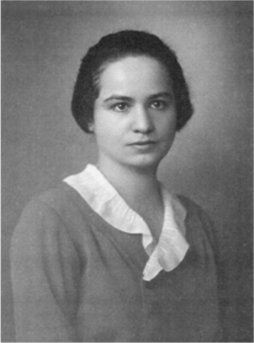Marietta Blau facts for kids
Quick facts for kids
Marietta Blau
|
|
|---|---|
 |
|
| Born | 29 April 1894 Vienna, Austria-Hungary
|
| Died | 27 January 1970 (aged 75) Vienna, Austria
|
| Nationality | Austrian |
| Occupation | Physicist |
| Known for | Using nuclear emulsions to detect high energy particles |
Marietta Blau (born April 29, 1894 – died January 27, 1970) was an Austrian scientist. She was a physicist who made a big difference in the study of tiny particles. She created special photographic materials called nuclear emulsions. These materials could take pictures of very fast and powerful nuclear particles. This helped scientists understand particle physics much better.
For her amazing work, she received the Lieben Prize. This award came from the Austrian Academy of Sciences. Because she was Jewish, she had to leave Austria in 1938. This was when Nazi Germany took over Austria. She eventually moved to the United States. Marietta Blau was nominated for the Nobel Prize in both physics and chemistry. Even though she didn't win, her work was very important. Later, after returning to Austria, she won the Erwin Schrödinger Prize.
Contents
Her Life and Discoveries
Marietta Blau was born on April 29, 1894, in Vienna, Austria. Her family was Jewish and middle-class. Her father, Mayer Blau, was a lawyer and music publisher. Marietta went to a girls' high school. From 1914 to 1918, she studied physics and mathematics. She earned her PhD from the University of Vienna in March 1919. Her research was about how gamma rays are absorbed.
Blau is famous for developing special photographic plates. These plates, called nuclear emulsions, could "see" and measure tiny, fast-moving particles. This was a huge step forward for particle physics. It also helped scientists study reactions caused by cosmic rays. Cosmic rays are high-energy particles from space. Her methods greatly improved how scientists studied these particles. Because of her important work, she was nominated many times for the Nobel Prize in Physics. She was also nominated once for the Nobel Prize in Chemistry.
Before World War 2
From 1919 to 1923, Blau worked in different research places. She worked in factories and universities in Austria and Germany. In 1921, she moved to Berlin to work for a company that made X-ray tubes. Later, she became an assistant at the Institute for Medical Physics in Frankfurt.
Starting in 1923, she worked without pay at the Institute for Radium Research, Vienna in Vienna. She also got a special scholarship. This allowed her to do research in Göttingen and Paris in 1932 and 1933.
In Vienna, Blau focused on improving the photographic method for finding particles. She wanted to identify particles like alpha-particles and protons. She also wanted to measure their energy. She did this by looking at the tracks they left in the photographic emulsions. She was the first scientist to use nuclear emulsions to find neutrons.
In 1937, Blau and her student, Hertha Wambacher, won the Lieben Prize. This was for their work on these emulsions. It was a great success. Also in 1937, they made another big discovery. They found "disintegration stars" on photographic plates. These plates had been exposed to cosmic radiation high up in the mountains. These "stars" are patterns of particle tracks. They show what happens when cosmic rays hit the nuclei in the photographic emulsion.
Because she was Jewish, Blau had to leave Austria in 1938. This was after Nazi Germany took control of the country. This event greatly affected her science career. She first went to Oslo. Then, with help from Albert Einstein, she got a teaching job. This was at the Instituto Politécnico Nacional in Mexico City. Later, she worked at Universidad Michoacana de San Nicolás de Hidalgo. But it was hard to do research in Mexico. So, in 1944, she moved to the United States.
After the War
In the United States, Blau worked in different places. She worked in industry until 1948. After that, she worked at Columbia University, Brookhaven National Laboratory, and the University of Miami until 1960. At these places, she used her photographic method. She applied it to experiments with powerful particle accelerators. These machines speed up tiny particles.
In 1960, Blau returned to Austria. She continued her scientific work at the Institute for Radium Research until 1964. Again, she worked without pay. She led a team that looked at particle tracks from experiments at CERN. CERN is a large science lab in Europe. She also guided a student's research in this area. In 1962, she received the Erwin Schrödinger Prize. This was from the Austrian Academy of Sciences.
Her Death
Marietta Blau died in Vienna on January 27, 1970. She passed away from cancer. Her illness was likely connected to working with radioactive materials for many years. She also smoked cigarettes for a long time.
Her Impact
In 1950, Cecil Powell won the Nobel Prize in Physics. He won it for developing the photographic method to find particles. He also discovered the pion, a type of particle. He used Marietta Blau's methods for his work. This shows how important her discoveries were to physics.
Images for kids
See also
 In Spanish: Marietta Blau para niños
In Spanish: Marietta Blau para niños




